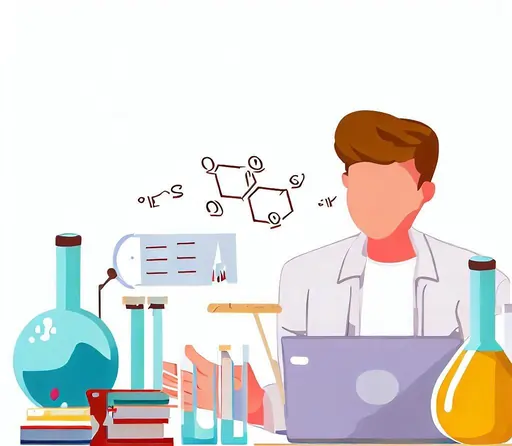Solving Gas Laws Problems: A Comprehensive Guide for Assignments

Introduction to Gas Laws
Gas Laws are a set of fundamental principles in chemistry that describe how gases behave under different conditions of temperature, pressure, and volume. These laws are crucial in understanding the behavior of gases and are commonly used in various real-world applications, from industrial processes to weather predictions.
The Gas Laws can be categorized into several key principles:

Boyle's Law
Boyle's Law, a fundamental concept in gas physics, reveals a critical relationship between the volume and pressure of a gas at constant temperature. This law has extensive real-world applications, from understanding how our lungs work to designing efficient engines. In scuba diving, for example, Boyle's Law explains why divers must monitor their air tanks closely; as they descend underwater, the pressure increases, causing the air volume to decrease, potentially leading to dangerous situations if not managed properly. Boyle's Law plays a vital role in various scientific and practical contexts, making it a cornerstone of gas law understanding. The mathematical expression of this is:
P1V1 = P2V2
Where:
- P1 and P2 are the initial and final pressures, respectively.
- V1 and V2 are the initial and final volumes, respectively.
Charles's Law
Charles's Law, another essential concept in gas physics, highlights the relationship between the volume and temperature of a gas at constant pressure. When the temperature of a gas increases, its volume expands, and when the temperature decreases, its volume contracts, all while pressure remains steady. This law's applications range from understanding weather patterns to engineering and refrigeration. For instance, in refrigeration systems, this law explains why gases expand and cool down when released into a lower-pressure area, allowing for efficient cooling of our homes and refrigeration of perishable goods. Charles's Law is a fundamental principle in the study of gases, with implications in various scientific and industrial fields. It is expressed as:
It is expressed as:
V1/T1 = V2/T2
Where:
- V1 and V2 are the initial and final volumes, respectively.
- T1 and T2 are the initial and final temperatures, respectively.
Gay-Lussac's Law
Gay-Lussac's Law, a pivotal component of gas laws, elucidates the intriguing relationship between the pressure and temperature of a gas, provided that volume and quantity remain constant. According to this law, as temperature increases, so does the pressure, and conversely, as temperature decreases, pressure drops. This principle finds critical applications in areas such as weather forecasting, where variations in pressure and temperature are key indicators of changing weather patterns. Additionally, in industries like aviation, understanding Gay-Lussac's Law is essential for maintaining aircraft safety, as altitude changes can affect pressure and temperature conditions inside the cabin. In essence, Gay-Lussac's Law is indispensable in comprehending gas behavior across various scientific and practical domains.
The mathematical representation is:
P1 / T1 = P2 / T2
Where:
- P1 and P2 are the initial and final pressures, respectively.
- T1 and T2 are the initial and final temperatures, respectively.
Avogadro's Law
Avogadro's Law is a pivotal principle in the study of gases, revealing that under constant temperature and pressure conditions, equal volumes of gases contain an equal number of molecules. This law helps establish the concept of the mole, a fundamental unit in chemistry, and is essential in stoichiometry, the study of reactant and product relationships in chemical reactions. Avogadro's Law is at the heart of the ideal gas equation, connecting the quantity of gas particles (moles) to measurable properties like volume and pressure. It's a foundational concept that underpins our understanding of gas behavior and is indispensable in chemistry, from laboratory experiments to industrial processes.
Mathematically, it can be expressed as:
V1 / n1 = V2 / n2
Where:
- V1 and V2 are the initial and final volumes
- n1 and n2 are the initial and final amounts (in moles) of gas, respectively.
The Ideal Gas Law
The Ideal Gas Law, encapsulated in the equation PV = nRT, is a cornerstone of the study of gases. It unifies Boyle's, Charles's, and Avogadro's Laws into a single, versatile equation. This law describes the behavior of an ideal gas, where pressure (P), volume (V), the number of moles (n), the ideal gas constant (R), and temperature (T) are interconnected. It's a powerful tool for understanding gas behavior in diverse applications, from industrial processes to weather forecasting. While real gases may deviate from ideal behavior under extreme conditions, the Ideal Gas Law serves as an essential starting point for analyzing and predicting gas properties in countless scenarios.
It is expressed as:
PV = nRT
Where:
- P is the pressure of the gas.
- V is the volume of the gas.
- n is the number of moles of the gas.
- R is the ideal gas constant.
- T is the temperature in Kelvin.
Now that we have an understanding of the fundamental Gas Laws, let's dive into the step-by-step strategies to solve Gas Laws problems effectively.
Step-by-Step Strategies to Solve Gas Laws Problems
Solving gas laws problems can be challenging, but with the right approach, you can confidently solve your gas laws problems. By following step-by-step strategies tailored to each gas law, you can tackle complex assignments effectively. These methods help you identify knowns and unknowns, choose the right law, and apply mathematical principles to find solutions, ensuring success in your gas laws problem-solving endeavors.
- Identify the Knowns and Unknowns
- Convert Units to SI Units
- Choose the Appropriate Gas Law
- Rearrange the Gas Law Equation
- Substitute Values and Solve
- Check for Extraneous Conditions
- Express the Answer Clearly
Identifying the knowns and unknowns is the critical first step in successfully solving gas laws problems. This fundamental step clarifies what information you have and what you need to find. Knowns are the provided data, including values for pressure, volume, temperature, and the number of moles. Unknowns are the variables you aim to calculate. By clearly defining these elements, you set the foundation for an organized and effective problem-solving process. This initial clarity ensures that you select the appropriate gas law, make necessary unit conversions, and perform accurate calculations, making your journey to solve your gas laws problems much smoother and more efficient.
Converting units to SI units is a crucial step in solving gas laws problems accurately. SI units, or the International System of Units, provide a standardized way to express physical quantities, ensuring consistency and precision in scientific calculations. Gas laws, involving pressure (P) in pascals (Pa), volume (V) in cubic meters (m³), and temperature (T) in Kelvin (K), require adherence to SI units for reliable results. Failing to convert units correctly can lead to incorrect solutions, highlighting the importance of this step in ensuring the integrity of your gas laws problem-solving process. It's a fundamental practice that underscores the precision and rigor of scientific inquiry.
Selecting the appropriate gas law is a crucial step in successfully solving gas laws problems. Each gas law—Boyle's, Charles's, Gay-Lussac's, and the Ideal Gas Law—addresses specific aspects of gas behavior. Understanding the problem's context and the given information is key. Boyle's Law is ideal for pressure and volume changes, Charles's Law for volume and temperature relationships, and Gay-Lussac's Law for pressure and temperature variations. The Ideal Gas Law, encompassing them all, is versatile but requires the ideal gas assumption.
Rearranging the gas law equation is a crucial step in solving gas laws problems efficiently. This process involves manipulating the formula to isolate the desired variable, making it easier to calculate. Whether you're using Boyle's, Charles's, or any other gas law, rearranging allows you to express the equation in a form that directly addresses the unknown you need to find. It's essentially a strategic move in problem-solving, simplifying the math and ensuring you're on the right track. This skill is essential for tackling complex gas law problems and honing your ability to solve your gas laws problems with confidence.
Once you've meticulously set up your gas law equation and ensured that all units are consistent, the next critical step is to substitute the known values and solve for the unknown variable. This phase involves straightforward algebraic calculations and careful attention to detail. Precision in your calculations and unit handling is paramount to arrive at an accurate and meaningful result. Whether you're working on Boyle's Law, Charles's Law, or any other gas law problem, this step is where your problem-solving skills shine. It's the bridge that transforms theoretical knowledge into practical solutions, reinforcing your ability to solve your gas laws problems effectively.
In the realm of gas laws problem-solving, it's crucial to be vigilant for extraneous conditions that may disrupt the straightforward application of these laws. Real gases, especially at extreme pressures or temperatures, may deviate from ideal behavior. Factors like molecular interactions and non-negligible volume can complicate the calculations. By staying alert to such conditions, you ensure the accuracy of your results. For instance, high pressure may necessitate using the van der Waals equation, which accounts for deviations from ideal gas behavior. Recognizing and adjusting for these nuances demonstrates a deeper understanding of gas laws and a commitment to precise problem-solving.
Finally, express your answer clearly and ensure it has the correct units. Don't forget to include the proper units in your final answer, as this is crucial in chemistry assignments.
Sample Gas Laws Problems
Let's apply the step-by-step strategies to a few sample Gas Laws problems to illustrate how to solve them.
Sample Problem 1: Boyle's Law
Problem: A gas initially occupies a volume of 2.0 L at a pressure of 3.0 atm. If the volume is decreased to 1.0 L, what will be the new pressure if the temperature remains constant?
Solution:
Knowns and Unknowns:
- V1=2.0L (initial volume)
- P1=3.0atm (initial pressure)
- V2=1.0L (final volume, unknown)
- P1= ? (final pressure, unknown)
- Temperature (T) remains constant.
Convert Units:
- No unit conversions are needed in this case.
Choose the Appropriate Gas Law:
- Since the temperature is constant, we can use Boyle's Law.
Rearrange the Gas Law Equation:
Boyle's Law: P1V1=P2V2
Rearrange to solve for P2 : P2 = P1 V1 / V2
Substitute Values and Solve:
P2 = (3.0atm) (2.0L) / 1.0L
P2 = 6.0 atm
Express the Answer Clearly
- The new pressure, P2, is 6.0 atm.
Conclusion
Solving Gas Laws problems doesn't have to be intimidating. By following the step-by-step strategies outlined in this comprehensive guide, you can approach your chemistry assignments with confidence and accuracy. Remember to identify the knowns and unknowns, choose the appropriate Gas Law, rearrange the equation if necessary, and always express your answer clearly with the correct units. With practice, you'll become proficient at solving Gas Laws problems and solve your chemistry assignment dilemmas effortlessly. Chemistry may seem complex, but mastering it step by step is entirely achievable.